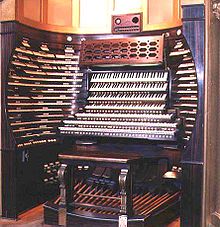Di seguito le informazioni ottenute dal supporto tecnico Apogee (gentilissimo e disponibile) con una serie di domande e risposte:
Domanda:
Hi, I just would like to know how the output level is
controlled, if it's in the digital or analog domain, and if possible
get some info about the used technology. Thanks, Marco
Risposta:
The encoder is a digital control of analog output and can be bypassed entirely. The real answer you're probably looking for is whether this control reduces bit depth when turned down and it does not.
Domanda:
1. how can the encoder be entirely bypassed, as you said?
2. I'm using the symphony, with great satisfaction, in my small home
studio for recording and as DAC for my hifi system. Regarding this
last application, I'm shifting from a "traditional" setup with
pre-amplifier and main amplifier to a shrinked setup, connecting the
Symphony directly to the main amplifier. Could you suggest some
preferred electrical figures (if any) for the ideal main amplifier
(Zin, Capacitance, ...) for a good match with the symphony?
Risposta:
If you'll be connecting the output of the Symphony I/O to a consumer -10 dBv level amplifier. In the Apogee Maestro 2> output tab set the Analog Ref Level for outputs 1 and 2 on the -10 dBv setting, assuming these are the outputs that are being connected to the amplifier.
Domanda:
this is the way I'm using it, set at -10 dBv. So, if I understand
right, if the output is set to 0 dB the encoder is entirely bypassed,
if it is set to a lower value it starts to operate, right?
Regarding some suggestions for the electrical characteristics of the
(consumer) amplifier, nothing to say?
Risposta:
Correct, the reason I made no comment about the electrical characteristics of a consumer amplifier is because it's inconsequential. The point of having a -10 dBv setting is to provide compatibility regardless of capacitance or impedance specifications.
http://www.sengpielaudio.com/calculator-db-volt.htm
Quindi, sembrerebbe che da un punto di vista tecnico non ci siano controindicazioni nel collegare il DAC direttamente ad un finale.
Una breve descrizione del resto della catena:
Computer: macmini (pure music player)
DAC: Apogee symphony
Cavo di segnale: http://www.proaudiola.com/product-p/8-m3162-apogee-ddb-xlrm-3-p.htm
Finale: Jeff Rowland 112
Cavo di potenza: MIT shotgun 750 S2
Diffusori: Kharma CRM 2.3
Ambiente: 20-25 mq
Musica: 85% rock-pop-blues, 15% classica sinfonica
Ho appena venduto il pre e il setup analogico, e vorrei reinvestire il ricavato per sostituire il finale, con l'idea che se malauguratamente dovessi realizzare che in realtà il pre è imPREscindibile

, potrei comunque reintrodurlo tra un paio d'anni, quando, ad essere ottimisti, ne avrò la possibilità economica.
Come dicevo, il suono senza pre è sicuramente diverso, migliore per dettaglio e velocità, ma con una scena meno ampia, comunque sia ottimo a volume medio-basso, ma all'aumentare del volume inizia ad "indurire" e perdere profondità, e quelli che sembravano miglioramenti diventano difetti.
Quello che gradirei sapere è se qualcuno ha esperienza di un caso simile, perlomeno per dare una scrematura sui papabili da (cercare) di ascoltare.
ovviamente commenti/consigli diversi sono i benvenuti.
Marco










 , potrei comunque reintrodurlo tra un paio d'anni, quando, ad essere ottimisti, ne avrò la possibilità economica.
, potrei comunque reintrodurlo tra un paio d'anni, quando, ad essere ottimisti, ne avrò la possibilità economica.

 per la Vitus, che ha realizzato un finale dettagliato ma affatto affaticante
per la Vitus, che ha realizzato un finale dettagliato ma affatto affaticante